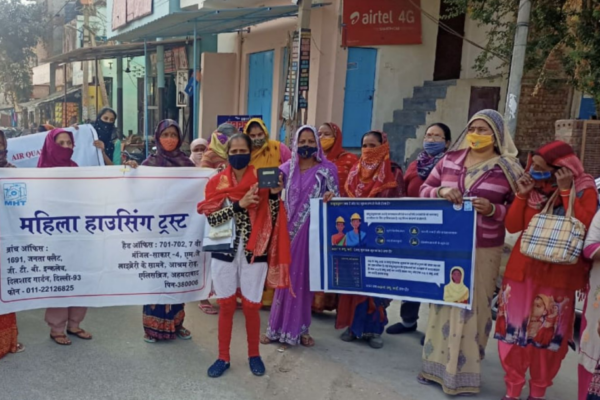The National Capital Region (NCR) of Delhi has battled high levels of air pollution for years now.
Among several sources of pollution, transportation consistently emerges as a major factor in Delhi’s persistent air pollution crisis. Despite efforts to enhance public transport and adopt cleaner technologies, the rise in vehicles continues to offset these improvements. This situation calls for innovative methods to measure and mitigate emissions in real time. This is where remote sensing technology comes into play.
What is remote sensing of vehicle emissions?
Unlike traditional testing methods that rely on static conditions, such as laboratories, remote sensing measures vehicles’ emissions in real-world conditions. The technology uses infrared and ultraviolet light to detect pollutants like nitrogen oxides (NOx), carbon monoxide, hydrocarbons, and particulate matter (PM).
The Real Urban Emissions (TRUE) Initiative, with support from the ICCT and FIA Foundation, worked with authorities in Delhi and Gurugram to conduct emissions testing of on-road vehicles with non-intrusive remote sensing technology. In the study, the technology was deployed across 20 sites in Delhi and Gurugram, collecting over 111,000 valid emissions readings across vehicle categories, such as two-wheelers, three-wheelers, private cars, taxis, light goods vehicles and buses.
Key findings of the study
The newest emissions standard, called Bharat Stage (BS) VI, has led to a significant reduction in emissions. However, the study reveals that certain vehicle categories, particularly commercial vehicles like light goods vehicles (LGVs), taxis, and buses, emit higher real-world NOx emissions than private vehicles.
It is evident that real-world emissions from transport vehicles differ significantly from their values in laboratories. Notably, even vehicles powered by compressed natural gas (CNG), traditionally considered a cleaner fuel, displayed higher emissions than anticipated. For instance, light goods vehicles (Class II) powered by CNG produced to the latest standard had average NOx emissions 14.2 times higher than lab limits.
CNG has long been considered as a cleaner alternative to diesel, which is true in the context of particulate matter pollution. However, the study questions whether it remains the best option for cities facing severe air quality issues like Delhi. Some CNG vehicles, perhaps those retrofitted or lacking proper aftertreatment systems, were found to emit more NOx than expected, a pollutant that forms secondary particulate matter. This raises concerns about relying on CNG as a transitional fuel and suggests that the future might lie in accelerating the shift to zero-emission vehicles (ZEVs), especially for commercial vehicles.
The road ahead: policy recommendations
To address the high emissions from certain vehicle types, the report recommends:
- A focused transition to zero-emission vehicles for commercial vehicles in the NCR, with policies like ZEV sales mandates and a phase-out of highly polluting vehicle segments.
- Enhancements to existing standards, such as implementing new phases of BS VI in short-term and BS VII by 2028 that introduce stricter real-world emissions testing and monitoring.
- Using remote sensing technology in tandem with the existing idle-state emissions testing regime to identify high-emitting vehicles and enforce emissions limits more effectively. Finalising the Automotive Industry Standards (AIS) 170 is also key for the adoption of this technology.
Collaborating for impact
As part of the study’s outreach, detailed training sessions were conducted for officials from different state transport departments and pollution control boards on the importance of real-world emissions measurement and the use of advanced technology like remote sensing. Policymakers learned about the benefits of tracking on-road emissions, providing them with the knowledge needed for effective implementation.
The study’s findings were presented to key government bodies and stakeholders, including the Ministry of Road Transport and Highways (MoRTH), the Ministry of Housing and Urban Affairs (MoHUA), the NITI Aayog, the Automotive Research Association of India (ARAI), the International Centre for Automotive Technology (ICAT), the Commission for Air Quality Management in NCR and Adjoining Areas, and the Central Pollution Control Board. The transport departments of Delhi, Haryana, Uttar Pradesh, and Rajasthan were also detailed on the findings.
These engagements have resulted in the Delhi Transport Department preparing to procure a remote sensing device, funded by the Delhi Pollution Control Committee. The Supreme Court of India echoed its earlier stance from 2018 and 2019, reinforcing in its July 2024 directive to implement remote sensing technology in the National Capital Region (NCR). This renewed emphasis aligns perfectly with the study’s findings, marking a pivotal moment in addressing Delhi’s air quality challenges through advanced technologies.
These collaborative efforts highlight the growing recognition of data-driven approaches in tackling the pressing issue of vehicular emissions, setting the stage for more informed decision-making and sustained policy action.


